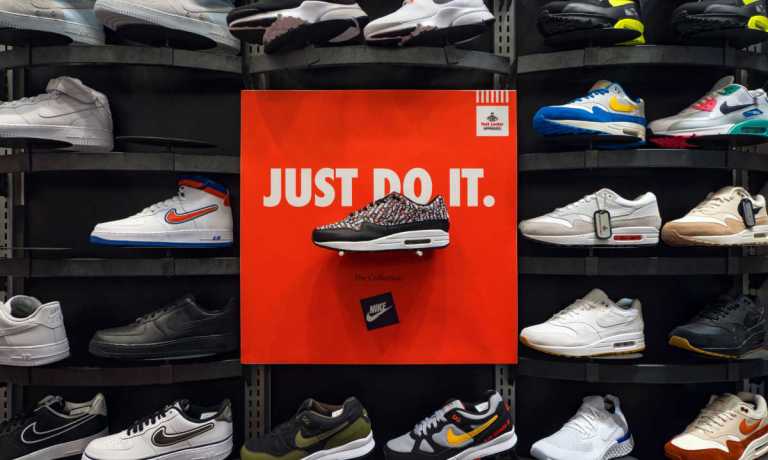
Nike has taken its game to the next level in the women’s market, boasting a reported business of around $9 billion — excluding Jordan and Converse.
“Our women’s business has grown high single digits on average over the past three years,” Nike President and CEO John Donahoe said during an earnings call with analysts on Thursday (Dec 21).
Donahoe highlighted that approximately 40% of Nike’s members are women consumers — and this group is growing, representing a rising portion of new members. This trend indicates an increasing demand per member. Recognizing this opportunity, Nike aims to better serve these consumers across both performance and lifestyle categories.
In the performance category, Nike is actively innovating to create new opportunities for women, especially in fitness apparel. The strategy includes introducing bras and leggings at various price points, featuring premium options like Zen, Vigo and Universal above the $100 price point. This approach, emphasizing fit and comfort through material innovation, has resulted in strong consumer adoption, especially for statement leggings.
Donahoe highlighted a big focus on shoes, especially the successful Motiva and Free Metcon models. These shoes meet women’s needs for both performance and everyday wear, fitting with Nike’s commitment to providing quality products for different parts of women’s lives. This strategy adds value for customers, encouraging them to spend — a point that has been consistently stressed in earnings calls this quarter.
Read more: Retailers Play the Value Card to Capture Consumer Spend
And while Nike is looking to grow the women’s category, during the call on Thursday, Donahoe highlighted that the company would also continue to take steps toward becoming more efficient.
During the call, Donahoe revealed that Nike has implemented a strategy to cut costs by around $2 billion over the next three years, pointing to a more conservative revenue outlook for the second half of the year.
The athletic footwear giant aims to streamline operations by simplifying its product lineup, increasing automation and technological integration and optimizing its organizational structure. The company’s goal is to leverage its scale to enhance efficiency.
The funds saved from these initiatives won’t just sit idle; Nike intends to reinvest them to power future growth, speed up innovation and ensure long-term profitability.
However, executing this plan comes with a cost — specifically, a price tag of $400 million to $450 million in pre-tax restructuring charges. The majority of these charges are anticipated to manifest in Nike’s current quarter, primarily tied to employee severance expenses. It’s a strategic move by Nike, aligning with its commitment to financial efficiency and adaptability in the dynamic market landscape.
Nikes’ previous quarterly earnings call revealed that despite consumers’ hesitancy to spend, the brand was seeing strong direct-to-consumer (D2C) sales.
During the October earnings call, Chief Financial Officer Matthew Friend emphasized a significant increase in user engagement in the Direct business, with order values on the rise compared to the previous year.
Friend also informed analysts that Nike Direct was set to “maintain its position as the driving force behind our growth for the remainder of this fiscal year.”
See also: Nike Sees Strong D2C Sales Despite Consumers’ Discretionary Spending Pressures
“Our Q2 results demonstrated how we are getting back on our front foot in our key areas of innovation and growth,” said Donahoe in a press release. “This quarter showed strong execution by our team as we focus on our winning formula of innovative product, distinctive storytelling and differentiated marketplace experiences.”
During the second quarter, the company achieved $13.4 billion in revenues, marking a 1% increase on a reported basis compared to the previous year, and a 1% decrease on a currency-neutral basis. Nike Direct revenues rose to $5.7 billion, showing a 6% increase on a reported basis and a 4% increase on a currency-neutral basis. Meanwhile, Nike Brand digital sales experienced a 4% growth on a reported basis and a 1% increase on a currency-neutral basis.
In contrast, wholesale revenues amounted to $7.1 billion, reflecting a 2% decrease on a reported basis and a 3% decrease on a currency-neutral basis. The gross margin demonstrated a notable improvement, increasing by 170 basis points to reach 44.6%.
The diluted earnings per share for the second quarter reached $1.03, showing a substantial 21% increase.